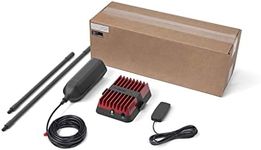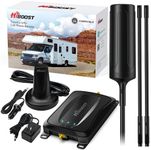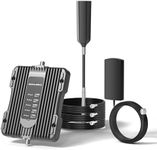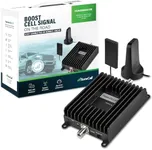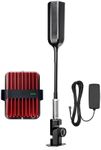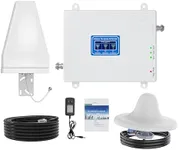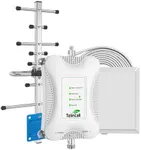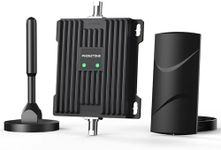Buying Guide for the Best Cell Boosters For Cars
Choosing the right cell booster for your car can significantly improve your mobile signal strength, ensuring you stay connected even in areas with weak reception. To make an informed decision, it's important to understand the key specifications and how they relate to your needs. Here are the essential specs to consider when selecting a cell booster for your car.Frequency BandsFrequency bands refer to the specific radio frequencies that the cell booster can amplify. This is important because different carriers use different frequency bands for their networks. Common bands include 700 MHz, 800 MHz, 1900 MHz, and 2100 MHz. To navigate this spec, check which bands your carrier uses and ensure the booster supports those bands. If you frequently travel and use multiple carriers, a booster that supports a wide range of bands will be beneficial.
GainGain is a measure of how much the booster can amplify the signal, typically expressed in decibels (dB). Higher gain means stronger signal amplification. Gain values usually range from 23 dB to 50 dB for car boosters. If you often drive in areas with very weak signals, a higher gain booster will be more effective. For areas with moderate signal strength, a lower gain booster may suffice.
Antenna TypeCell boosters come with different types of antennas, including omnidirectional and directional antennas. Omnidirectional antennas can receive signals from all directions, making them ideal for moving vehicles. Directional antennas focus on signals from a specific direction, which can be useful if you often drive in areas with known signal sources. Choose an omnidirectional antenna for general use and a directional antenna if you have specific signal needs.
Coverage AreaCoverage area refers to the size of the area within your car that the booster can effectively amplify the signal. Most car boosters are designed to cover the interior of a vehicle, but the exact coverage can vary. If you have a larger vehicle, such as an RV or a van, you may need a booster with a larger coverage area. For standard cars, a typical booster should provide sufficient coverage.
Installation EaseInstallation ease is about how simple it is to set up the cell booster in your car. Some boosters come with plug-and-play designs that require minimal effort, while others may need more complex installation. If you're not comfortable with technical setups, look for a booster that offers easy installation with clear instructions. For those who enjoy DIY projects, a more complex setup might be acceptable.
CompatibilityCompatibility refers to whether the cell booster works with your specific mobile devices and carrier networks. Most boosters are designed to be universally compatible, but it's always good to check if the booster supports your phone model and carrier. If you use multiple devices or switch carriers often, a universally compatible booster will be more convenient.
